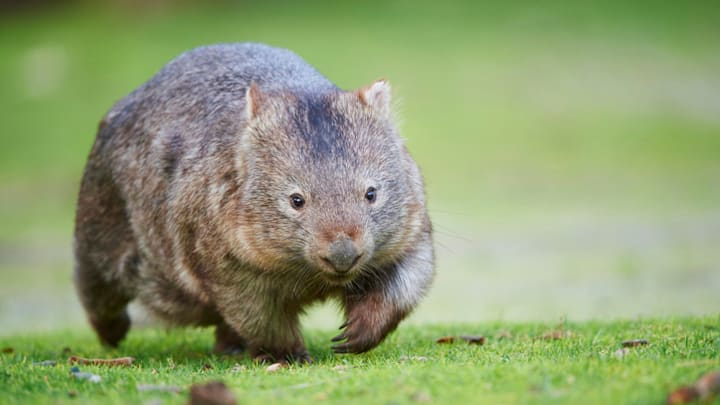A butt that can kill sounds like a boast from a Nicki Minaj rhyme. But, according to a viral TikTok video, such a thing may be found in nature.
A user named “drtanveerk” posted a 24-second computer animation with a supposed wild fact about wombats claiming that, when chased by predators, the muscular marsupials run back to their dens, pointing their backsides toward the entrance. “This is because a wombat’s butt is made mostly of thick cartilage which is hard and tough for predators to bite,” a voice says. “If a predator tries to follow it into the den, the wombat will use its butt to crush the predator’s head against the ceiling. In this way, the wombat can even kill the predator by twerking it to death.”
Another video posted by the same account claims that three quick chimes on an airplane’s overhead sound system alerts the crew to an emergency. This is true. Another says that, when under assault, ants can willfully to explode to coat an adversary with toxic goo. That is true of some species. But the wombat’s deadly derrière? Is that for real?
Wombats do have exceptionally tough bums. Their backside consists of four bone plates covered by thick cartilage and skin and fur. This makes it difficult for predators to snatch them from behind, and wombats have guarded the entrances of dens using their rears as a shield.
But experts are not sure their butts are instruments of death.
A biologist from the University of Adelaide told the Guardian in 2020, “It is possible, by their physiology and everything, but there is no evidence that that is actually happening.”
Wildlife biologists have told the Washington Post and Australian Geographic that they have found dead foxes and dingoes outside wombat dens. But the wombats could just be tidying up. They often take over the dens of other animals, whose remains may still be there.
Inspired by the viral video, a reporter for Popular Science asked Lisa Martin, a wildlife care supervisor from the San Diego Zoo Wildlife Alliance, directly. She said she doubted wombats would make such skilled use of their dens but it’s possible one could shake their butt “in such a way that caused the rock to go into the skull or make a cut” and “it might look like the wombat surely intended for that damage to happen to the predator.”
Still, wombat butts are one of nature’s wonders, if only because they poop in cubes and control their marsupial pouch with their sphincter muscle.
Read More Wild Facts About Animals:
